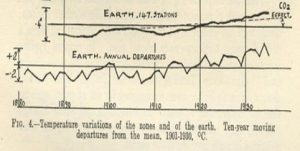
“Climate change is no longer some far-off problem. It is happening here; it is happening now”
Barack Obama
INTRODUCTION
Over the last century, scientists’ primary concern has been the reduction of greenhouse gas emissions, particularly CO2. The recent effects of global warming and global efforts to control and reduce CO2 emissions influenced international recognition of Reducing CO2 Emissions Day, annually on January 28th. International Reducing CO2 Emissions Day is associated with the 13th Sustainable Development Goal, “Climate Action” and its consequences. However, it is not to be confused with Zero Emission Day which is celebrated annually around the world on September 21st.
The relevant targets under the 13th Sustainable Goals, “Climate Action,” are as follows:
13.1 Increase all countries’ resilience and adaptive capacity to climate-related hazards and natural disasters.
13.2 Incorporate climate change mitigation measures into national policies and plans.
13.3 Increase educational and institutional capacity for climate change mitigation. Adaptation and mitigation.
13.A Implementing the developed countries’ commitment to the United Nations Framework Convention on Climate Change (UNFCCC), which aims to mobilize $100 billion annually by 2020 to address the needs of developing countries in the context of mitigation actions. Mitigation actions and transparency are used for implementations through the Green Climate Fund.
13.B Increasing the promotion of mechanisms to raise the capacity for climate change planning and management in developing countries and small island developing states (SIDS).
History of International Reducing CO2 Emissions Day
Early Awareness
Over the last few centuries, scientists, and philosophers all over the world have become aware of climate change and its impact on the atmosphere. The timeline began as early as 300 BC, when Theophrastus, a great philosophical student of Aristotle, documented the climate’s activity on forested areas near Philippi. Furthermore, Shen Kuo, a researcher in ancient China during the Northern Song Dynasty, discovered evidence of climate change. Shen Kuo was able to trace climate changes using bamboo fossils and plants that grew in the icy dry land, even though bamboo is typically found in tropical and subtropical regions of the world. Africa, Asia, Latin America, central China, and the United States of America are examples of such regions.
In the early 1800s scientist, Joseph Fourier and Clause Pouillet conducted experiments on the temperature of the Earth. In addition to this, Joesph Fouriers’ academic work focused on the greenhouse effect (the trapping of non-luminous ‘heat, i.e., infrared radiation). However, Louis Agassiz developed an understanding of the ice age in 1837 and believed the planet had previously experienced an ice age. Tyndall’s attempt to measure the absorption of various gases including CO2, N2O, and C2H4 provided data for Svante Arrhenius to manually calculate the radiative analysis of the atmosphere. This allowed us to calculate the amount of carbon dioxide existing in the atmosphere.
Arrhenius’s research concluded that once the temperature was estimated, the thermal impact of rising carbon dioxide levels in the atmosphere. In addition, in the 1930’s scientist, Guy Callender began collecting measurements of gases, atmospheric structure, sunlight position, fossil fuel, current temperature, and weather patterns. The information gathered was used to develop the first climate models, which were used to develop the first draft of climate models. Callender’s graph of 10-year moving average demonstrates the global climate warming has been occurring since as early as 1920.


The remarkable hand-drawn graphs depict the various temperature readings collected at various weather stations. Callender calculated and estimated the global temperature by hand without the assistance of a computer. In addition to his research, he showed the carbon dioxide concentration in the atmosphere and its increased level from 290 ppm (part (s) per million) in 1900 to 320 ppm in 1958 (see Figure 3).

Furthermore, Callander’s research emphasized the impact of carbon dioxide accumulation, which was caused by the combustion of fossil fuels. This altered the scientific debate over the effects of carbon dioxide or greenhouse gases. Furthermore, according to research, this then influenced many scientists on the impact of changes in global temperature and average carbon dioxide between 1880 and 2021, with the earth’s average temperature rising by about 1.8 degrees Fahrenheit (1.0 degrees Celsius) since the 1800s, as shown in Fig 4.

As a result of the warmer temperatures, about 80 % of oceanic species migrated to various places for breeding and feeding. Influencing marine species to move up to six hundred miles from where they once were abundant decades earlier. Given the influence of greenhouse gases, studies around the world reveal the melting of mountain glaciers, increase drought, wildfires, and lower water supplies. Scientists are driven to reduce the rising temperature by implementing the 1997 Kyoto Protocol to reduce greenhouse gases from industrialized countries. This later developed into the international Paris Climate Accord in 2015. The agreement legally binds 196 parties to a 2015 United Nations Climate Change Conference. The agreement covers climate change mitigation, adaption, and finance collectively aimed to achieve climate neutrality in the 21st century. The increasingly ambitious climate action goals birthed the National Determined Contributions (NDCs) that seek to build resilience and the impacts of rising temperatures and achieve a climate-neutral planet.

How to celebrate International Reducing CO2 Emissions Day
To encourage the practice of reducing emissions, industries and governments globally switched to more efficient practices such as recycling and alternative energy resources. There are numerous ways to reduce greenhouse emissions:
- Recycle: Recycling aids in the reduction of greenhouse gases since recycling removes the need for raw materials, which then reduces the amount of greenhouse gas produced annually among household waste.
- Change light bulbs: Switching to light-emitting diodes (LEDs) account for 40 % less energy storage when compared to conventional lighting. LEDs’ potential in the reduction of carbon emissions. This pivotal change may deliver savings of up to 80% as households and organizations reduce their environmental effect.
- Transition to Solar Energy: Achieving a net-zero solar panel installation is a method used to reduce the carbon footprint given that solar energy is a renewable resource. Since it is estimated that installing PV systems can reduce carbon footprint by 1.3 to 1.6 tonnes per year in the United Kingdom.
Don’t forget to spread the word about International Reducing CO2 Emission Day
References:
- Chen, S. (2021, December 2). International Efforts in Reducing Carbon Emissions. International Law and Policy Brief. https://studentbriefs.law.gwu.edu/ilpb/2021/12/02/international-efforts-in-reducing-carbon-emissions/
- Ghazali., Sidra. (2022, March 7). International Reducing CO2 Emission Day – January 28, 2023. National Today. https://nationaltoday.com/international-reducing-co2-emissions-day/
- World Economic Forum. (2022, February 14). Energy efficiency pivotal for reducing carbon emissions. https://www.weforum.org/agenda/2016/01/energy-efficiency-pivotal-reducing-carbon-emissions-climate-change/
- United Nations. (n.d.). Goal 13 | Department of Economic and Social Affairs. sdgs.un.org. https://sdgs.un.org/goals/goal13
- AnydayGuide. (2022, January 28). International Reducing CO2 Emissions Day Date in the current year: January 28, 2023. https://anydayguide.com/calendar/5093
